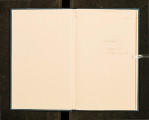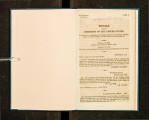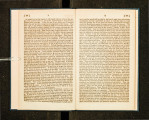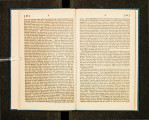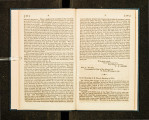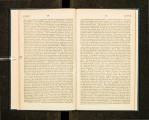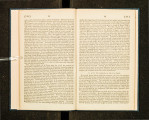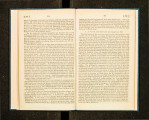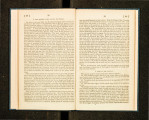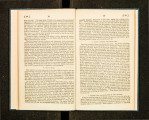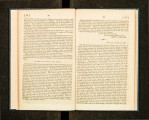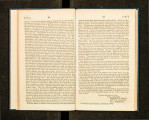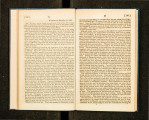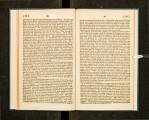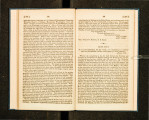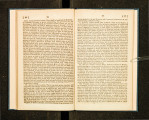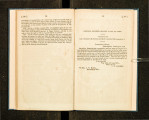| OCR Text |
Show [ 39] 18 pine and cedar. The upper parts of Clark's river present the same general appearance; but there are several situations on this river whirh would admit of settlement, to a con~iderable extent; and though not comparable in fertility of soil to the rich lands of Missouri and Illi noiR, yet. superior to many o[ the inha.b~ted and cultivated parts of the Atlantic States, where powerful commumt1es have grown up. The Flathead lake, and its rich and beautiful valley, are on this fork, and vie in appearance with the beautiful 1nkel" and ~alleys of S~itzerland. At. the foot o~ the mountains, according to information, there 1s a belt or stnp of fertile land, similar to what is seen at the foot of the Alleghany and Blue Ridge. The seco~d region. consistin~ o~ the plains, is sandy, destitute of timbcr-1 qmte unfit, u1 general, for culttvatwn, and famous only for the fine horses that arc found among the r nclians. The third region is heavily timbered, and intermixed with considerable t~acts of fertile soil, and, towa.rds the sea, is bound in by mountains, which hne ~he coast, and through .which all the waters of the valley of the Cumberland Issue, by one ch~nnel, mto the ocean. To the question, how far a nation of people. could substst w~st of the Rocky mountains) it mi~ht be answered, comparatively,. by refern.ng to the east side of the Alleghanies. The resources of a.gnculture might be something inferior; for grazing and raising stock; supenor, and for the salmon fishery, perhaps the very'" finest in the ~orld. These fish enter the mouth of the Columbia, ascend all its tributa· ~1es, and run,. when not impeded by great falls, to the heads of the creeks 111 the mountams. They will pass falls of sixteen ~eet I have " If • .l • 1 · my::se seen ~ynaus, m t 1e course of a few hours, ·pass the Kettle falls of the Columbia, JUSt below !he mouth o.f Clark's ~ork, which arc about that height. They ar~ the T~am resourc: of the I nd.tans; and to a civilized people, acquainted w1th takmg, and cunng ~h e m w1th salt, of which the Indians have none they would be a gre3.t art1cle of subsistence anc.l exportation. ' 5. THE CLE\IATE. This must be r?vicwed separately in the three different regions· but one geinlder al remf ark \Vtll apply to the whole which is that · h ' · it th . . fi . ' ' , In eac reg1on, ne 1n ness o e ~easo~s ts 1n mtely greater than in the correspondinrr. lati- ~d~s an4h elev:atwns Ill the valley of the lVIississi ppi, or in the Atlantic t.a es. . e wmters are less ~olu, and the summers less hot. In the mount~ m relfwn, even .where the highest. peaks are covered with perpetual snow t e va eys at the1r f~et are comparatively mild. ' As a pr~o~ of this, may be mentioned the state of the rass which is green ~nd JlllCY n~arly all winter, affording excellent as~re f~r horses on wh1ch those am mals not only sustain themselves butpth d 1 ' aet in goo l d . 'fj 1 ' e poor an ean 0 c or e1. 1e wooc s are burnt in the Iatt · t f the first crop of gra~;;s is ripe and dry . and th . et ~ar o. summer, when h.ring f~rward a new crop, which co~tinues ~~~~tn:it~~e;alns of. S~ptemb~r Btve evidence of the mildness of the climate of th g II . This IS a declrounded by mountains covered by snow T tl ~se va eys, even those surof the rivers, many of which are free fr~ . 0 d 11~ mah be added the state main Columbia is of this character as I% I~e ur!ng i e whole year. The formation when 1 ascended it t th ai ned Lrom observation and indle region, or the plains is st~ll e. l~ommcncentent of winter. The midserene atmosphere, and a' soft and ~~ill ~r, a~d re~arkable fo: a clear sky, a moon is near full and the hem· h Iant l~dunshine. The nights, when the ' 15P ere stu' ed over with .stars, are indc· 19 r 39 J scribably beautiful. The third, or tide water region, has a clima~e of i~s own. Ice or snow is seldom .;'Rrn ~ the heats are never ~reat ; and WInter lS hardly a distinct season. Next to the sea, rains and mist· are heavy .and ~ncessa{ l t from fall till spring: but the progress of these.toward~ the 1~tenor is, in some measure, arrested by the ranges of mountams, whiCh skirt the coast, anJ extend about sixty miles from the sea. yYithin that, and. for more than one hundred miles upwards to the head of tide water, the climate a~proximates to that of the plains; rains are less frequent, anc~ the country ~s altogether healthy. It is here, with aH the advanta.~e of cl_tmatc anJ navigation, opposite the mouth of the 1\tlultnan~ah, and w1t.h the nch low grounds of that river, the Columbia and the Cowehske, that the Hudson's Bay Company have founded their settlement ancl fort V ancouver, and where a great city and powerful nation will eventually grow up. 6. PASSES THROUGH THE MOUNTAINS. The most erroneous ideas pre vail upon this h ead. The Ro~ky m,o.untai~s are deemed by many to be impassable, an? to present ~he barner wmch will arrest the westward n1arch of the Arr.encan populatiOn. The man must know but little of the American people who supposes the~ can be stopped by any thing in the shape of moun.tait~s, descr.ts, seas, or nvers; and he can ]\.now nothin<T at all of the mountatns m questwn, to suppose that they are impassable. ~I have been familiar wi.th thes~ mountains for three year~, and have crossed them often and at varwus p01nts between the latttude 42 and 54; that is to say, betwe~n the head \Vaters of the Rio Colorado of the ~ulf of California, and the Athabasca of the Polar sea. I h ave, therefore, ~.he means to know somethin~ about th em, and a ri ~ht to opp?se ~ny knowled.~e. to the suppositions of strangers I say, th en, th~t nolh 111~ 1 more ea~tly passed than these mountains. \Vagons and carnage~ may cross tl:cm 1 n a state of nature without d iJ1 cully, and with little delay 1 n the . day's JOUrney. S01ne parts arc very high; but the p;radual rise o~ the country, 1n t~1e vast slope from the lVlississippi to the foot of the monntau! s, makes a con~aderc~ble e le .. vation without perceptible in crease, a~d. then .the gaps or depressJO.ns Jet you through almost upon a level. Thts IS parttcu lar ly .the case opposi te the head of the Platte, where I crossed in 1827, and whtch has ah·ead ~. been described. I have crossed here often, and always w1thout delay or ddncul· ty. It is, in fact, one of the best passes, and presents the best ov~r-land route from the valley of the !Vlississippi to the mouth of the Columbia, and would follow the line of the Platte and Lewis's river. Another pass, following the line of the Missouri and the Columbia, by water, would ~e up ~he Missouri to the Great falls, two thousand ftve hundred and seventy-ftve miles from St. Louis, and a clear navigation all the way;, th ~nce due north one hundred and fifty mileR, through a low gap, to ~la1~k s nv~r; thence dow~. the river, making some portages, to near the prmctpal, falls, and then ovel land sixty miles to the main Columbia. The Hudson s Bay Company use this route now in trading up Clark's river. From thence down the Colum-bia to the sea. 7. EXTENT AND CONFIGURATION OF TilE COUNTRY. F t h d · ·d. · d f 11 Roclry mountains is about nine or ten de .. rom e. lVl mg n ge o. , 1el d ~ . I 'le in a str:.~ i <Tht direction frolfl o-rees oflong1tude say about hve 1un teu Illi s, b f h~ the sea· from th; head of the Multnumah in the south ~0 the source 0 ~ '· · · r 1 s of latitude or a.bout nme Colum b1a m the north, 1s about J.ourteen <- egree . ' fi .'rt'l ])undred miles, in a strait line. These distancr~ would grve a super cJ,, · |



